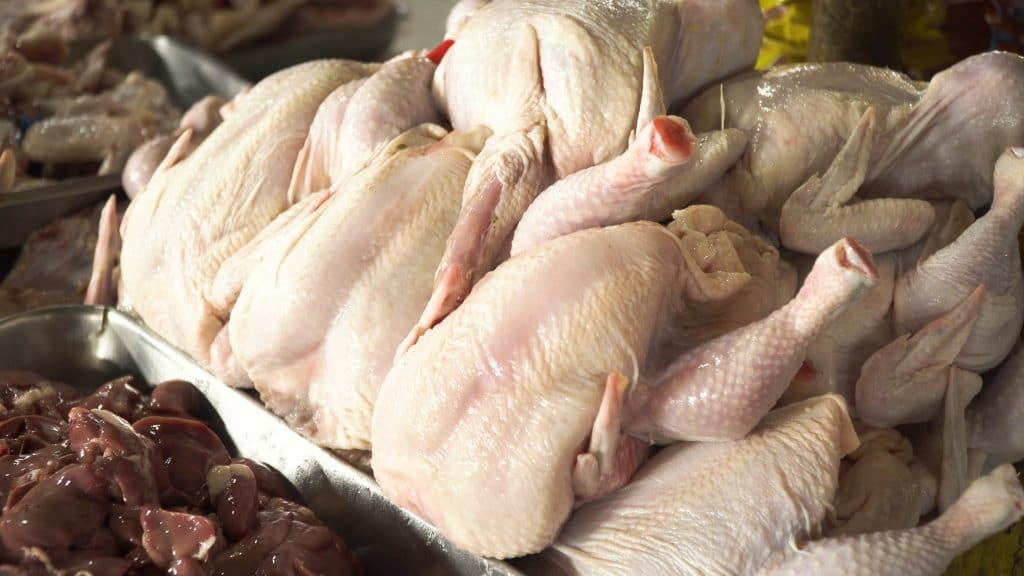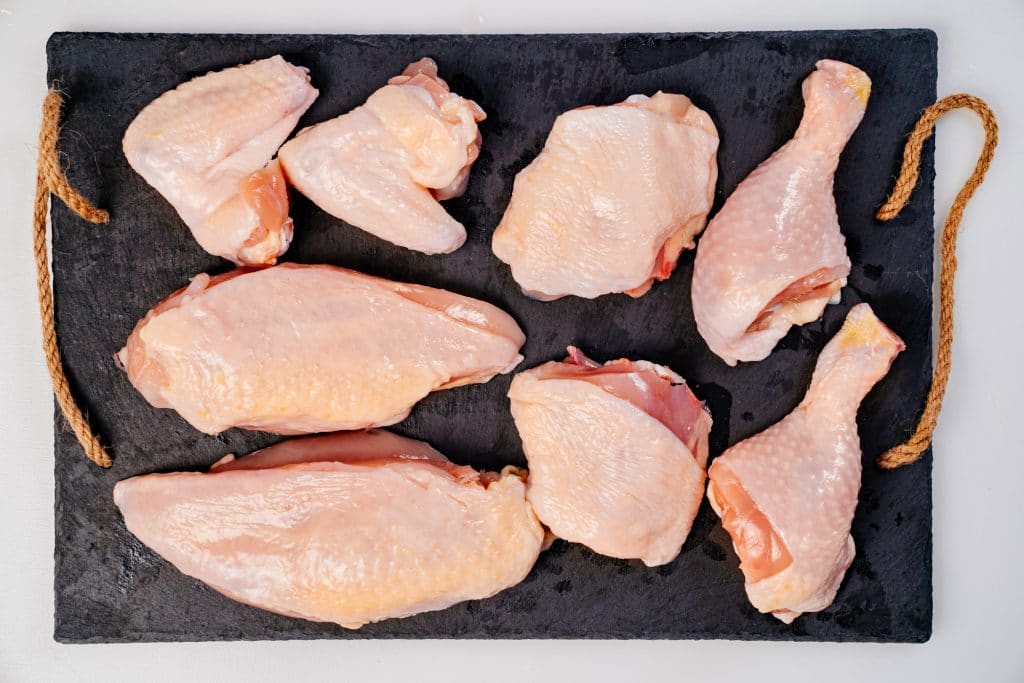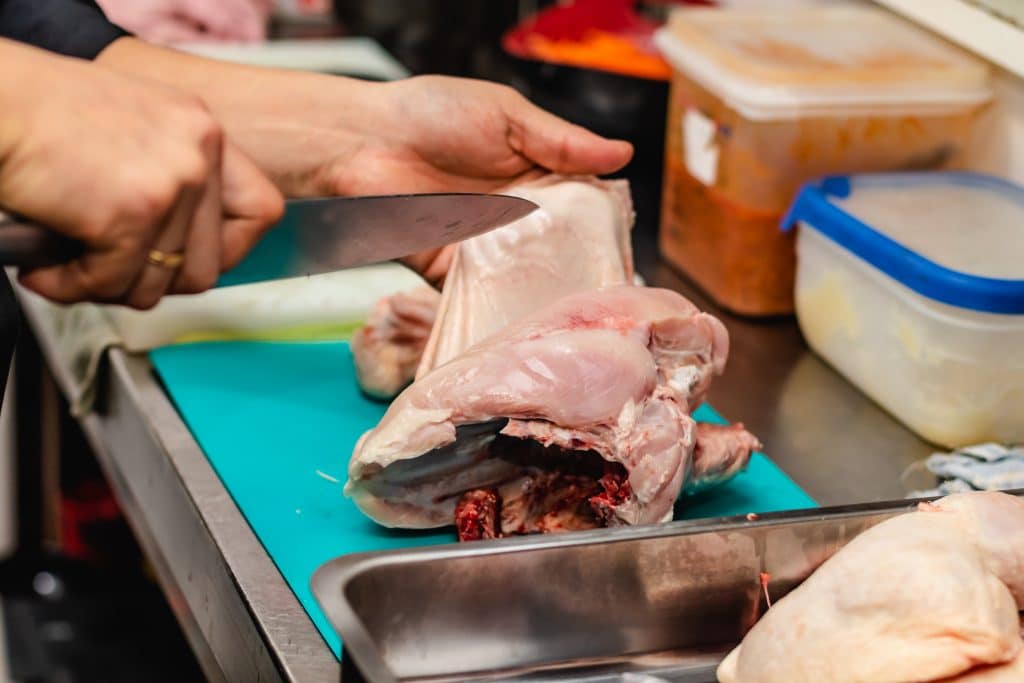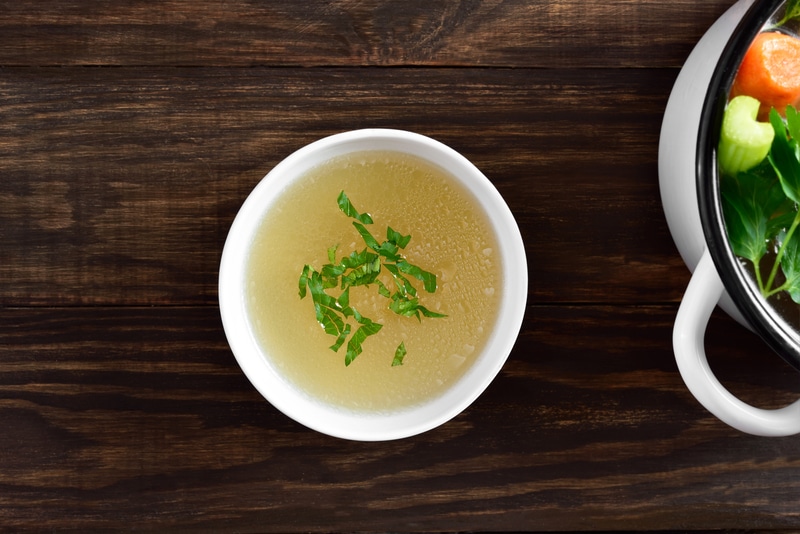Buying A Whole Chicken: Is It Worth It?
Important Note: When you buy through our links, we may earn a commission. As an Amazon Associate we earn from qualifying purchases. Content, pricing, offers and availability are subject to change at any time - more info.
Has convenience food killed the Sunday roast? A whole chicken was once a weekly highlight on the family menu, home-cooked and wholesome with leftovers for soups, salads, and sandwiches. Today, factory-portioned chicken pieces dominate the deli shelves, while most consumers regard whole bagged birds as too much bother. Hyper-inflation aside, it’s time to see who rules the roost as far as culinary value is concerned – a whole chicken or a tray of portions?
Advertisement
A whole chicken costs less per pound than chicken breasts, thighs, drumsticks, and wings. Chicken leg quarters are cheaper per pound than a whole chicken. Buying a whole chicken offers greater culinary scope and a broader spectrum of nutritional benefits than prepackaged chicken pieces.
To get the most out of a whole chicken does take time, and an above-average degree of cookery skill, at the butcher’s block and the cooktop. If you’re looking to save money, develop your culinary skills, and expand your repertoire of dishes, creating a whole chicken menu plan is a great place to start. Let’s break it down.
- How Much Cheaper Is A Whole Chicken Vs. Chicken Portions?
- How Many Usable Parts Does A Whole Chicken Have?
- What’s The Best Way To Butcher A Whole Chicken?
- How Do I Make Chicken Stock?
- Whole Chicken Help Resources
- Is Buying A Chicken Worth It?
How Much Cheaper Is A Whole Chicken Vs. Chicken Portions?

According to the US Department of Agriculture’s weekly National Retail Report, the prices of chicken (per pound) for whole birds and select chicken parts during the first week of March 2020 ranged from:
Whole Chicken
- $1.27/lb. for a bagged fryer
- $1.65/lb. for a bagged roaster
- $1.79/lb. for a cut-up fryer
- $2.84/lb. for a Cornish
Chicken Parts
- $0.65/lb. for bagged leg quarters
- $1.21/lb. for value-pack drumsticks
- $1.31/lb. for value-pack thighs
- $1.98/lb. for bone-in breasts
- $3.22/lb. for whole wings
From a strictly financial perspective, chicken leg quarters are a clear winner. The salient question is — how versatile are drumsticks and thighs?
Advertisement
This brings us to another important point — each chicken part/piece/portion has a unique texture and cooking characteristic.
A whole chicken includes white meat (breasts, tenders, and wings) and dark meat (thighs, drumsticks, and giblets).
The flavors and textures of individual chicken parts differ, with white meat having a mild flavor and lean texture, while dark chicken meat has a more intense flavor and a juicier texture.
Chicken quarters (thighs and drumsticks) are fattier and more intense in flavor than breasts, making better roast dishes, while breasts are best grilled.
- If you’re only buying a tray of specific portions (breasts, for example), your menu options will be prescribed by the characteristics of that particular cut of chicken.
- On the other hand, a skillfully butchered whole chicken will render a wide range of cooking ingredients with unique textures and flavors from its different parts.
The bottom line on the whole chicken vs. chicken pieces cost-benefit analysis is that all-important question — what’s on the menu?
It would be silly to buy six whole chickens if your only intention is to serve 12 chicken schnitzels. And equally daft to buy six chicken breasts if you want to make a chicken pie with spicy chicken kebabs for starters.
Advertisement
The crux of the issue is one of complexity versus convenience. There’s no denying that buying a whole chicken and cooking it, never mind butchering it, takes a lot more effort and time than cooking chicken portions.
- Cooks who favor speed and convenience over price will opt for prepackaged chicken portions.
- Cooks who want to run an economical and versatile kitchen will appreciate the value of a whole chicken.
Let’s assume you’re one such cook, passionate about chicken and keen to up the ante in your menu variation department while improving your knife-wielding skills. The figures make budgetary sense, and the meal ideas are flowing. You want to deconstruct a whole chicken for maximum value. Here’s the vital information.
How Many Usable Parts Does A Whole Chicken Have?

Main courses, side dishes, and bases for sauces can be made from various parts of a whole chicken. The giblets packaged with a whole chicken increase the culinary possibilities, along with the flesh, skin, bones, carcass, and cartilage cooked together to make chicken stock.
Whole chickens available from a supermarket vary in size and weight and fall into three categories:
- Cornish game hens weighing less than 2 lbs.
- Broilers (or fryers) weighing from 2.5 lbs. – 4.5 lbs.
- Roasters weighing upwards of 5 lbs.
The quality of the chicken you buy from a retail store can also vary. Broiler chickens are often fed fishmeal, which can taste a bit fishy, so check the labels for 100% grain-fed birds.
- Free-range chickens available from farmers’ markets are a good option if you’re looking for pure grain-fed poultry.
- A whole chicken with a Certified USDA Organic label on the bag ensures you’re getting a bird that ate meal containing no pesticides or antibiotics.
The parts of a whole chicken include:
- Two Breasts
- Two Tenders
- Two Thighs
- Two Drumsticks
- Two Wings
- Tail (Pope’s nose)
- Neck
- Liver
- Heart
- Oysters x 2
- Gizzard
- Carcass
- Skin
- Cartilage
Every part listed here will have a role to play in a comprehensive whole chicken menu plan.
Advertisement
You can use chicken breasts, thighs, drumsticks, and wings in over 100 recipes from all over the world, be they fried, broiled, boiled, grilled, sautéed, baked, or roasted.
The giblets can be used for stuffing or cooked as special side dishes. Chicken livers can be braised with onions and cooked in a chili sauce, or made into paté.
You can fry the chicken skin to render pure animal fat (aka schmaltz), a winner for making sauces and sautéing vegetables. The crispy chicken skins from the fat extraction process make tasty salty snacks.
All of the above chicken parts can be tossed into a pot and simmered for several hours to create chicken stock, which can then be stored in a freezer.
- Chicken stock is often used to make soups and sauces that incorporate other meats.
To illustrate the versatility of a whole chicken, here’s a hypothetical whole chicken weekly menu plan for a family of four using two whole chickens from Walmart costing $11.82 or $1.18/lb.:
- Monday – Chicken main course (4 x breasts for grilled chicken cutlets).
- Tuesday – Chicken salad (4 x tenders).
- Wednesday – Chicken soup (using homemade chicken stock rendered from the two chicken carcasses).
- Thursday – Skewered grilled chili chicken liver appetizers, with salty fried chicken skins and spicy giblets.
- Friday – Roast quarter legs main course (4 x thighs and 4 x drumsticks).
- Saturday – TV snack tray of 4 x BBQ chicken wings.
- Sunday – Main dish chicken pie (using chicken stock for the sauce and chicken flesh from the carcass, 2 x gizzards, and 4 x oysters).
Now let’s look at how much equivalent prepackaged chicken products from Walmart cost:
- Chicken breasts x 4 @$6.27
- Breast Tenders x 4 @approximately $5.00
- Chicken Soup (Campbell’s) @$1.18
- Appetizer Chicken Nuggets @$4.52
- Roast Chicken Leg Quarters x 4 @approximately $2.00
- BBQ Chicken Wings x 4 @ approximately $2.00
- Chicken Pie @ estimated chicken cost $1.20
That’s a TOTAL COST of $22.17 for a similar weekly chicken menu for a family of four people.
- BOTTOM LINE — Compare the two scenarios (whole chickens vs. chicken parts), and you’re looking at a cost saving of around $10 per week when you buy whole chickens!
What’s The Best Way To Butcher A Whole Chicken?

The best way to break down a whole chicken into portions is to use a sharp boning knife or kitchen shears to separate flesh, skin, and joints from the carcass. A butcher will deconstruct the whole chicken to render two breasts, two tenders, two thighs, two drumsticks, two wings, and giblets.
It may seem a little daunting for the novice chicken butcher, but getting that whole chicken separated into its parts isn’t complicated. Three or four chickens into your new butchering life, and you’ll have the technique down pat.
Advertisement
A solid plastic chopping block, a sharp boning knife, or a set of kitchen shears, and a pair of surgical gloves are essential tools for butchering a chicken. Also, have the necessary packaging materials ready, like cellophane, Tupperware, etc.
You may want to freeze some of the product from your butchering procedure. Still, it’s best to use fresh refrigerated chicken whenever possible, which shouldn’t be a problem if you’re working to a weekly menu schedule (and your fridge is working correctly).
Here’s the butcher’s technique — it involves knife-work and a fair amount of twisting and tugging too:
- Place the chicken on its spine on the chopping block with its breastbone at right angles to the counter edge.
- Remove the leg quarters by slicing down through the skin between the breasts and the thighs.
- Bend the thighs down and pull the thigh joints out of their sockets.
- Trim excess skin from the thigh-carcass area.
- Remove the two breasts by slicing down alongside either side of the breastbone.
- Remove the two wings by cutting around the joints and pulling them off the carcass.
- Separate the upper wing bone from the lower two using your knife.
- Separate the thigh from the drumstick by cutting into the joint and pulling them apart.
- Remove the two thighbones using your knife.
- Keep the carcass, excess skin, and thighbones to make chicken stock.
How Do I Make Chicken Stock?

To get the most flavorful chicken stock from a whole chicken carcass, drizzle cooking oil over the carcass and season it with salt and pepper. Roast the carcass with the loose skin and bones at 450°F for forty minutes, then slow cook in water with vegetables, herbs, and spices for up to ten hours.
It’s what you can get out of a chicken carcass when you make a stock out of it that gives a whole chicken genuine bang-for-your-buck.
Chefs the world over agree that a great stock or broth starts in a hot oven. By roasting the carcass and sundry bones and skins in a hot oven, the myriad flavors of the chicken are released, combining with aromatics and vegetable flavors to form a complex and noble base for sophisticated dishes.
Apart from the culinary boons of having homemade chicken stock in your refrigerator (and freezer), there are many nutritional benefits too that you won’t get from the trays of chicken pieces you buy from the supermarket.
Here’s a selection of dishes you can make using chicken stock:
- Tomato sauces
- Cream sauces
- Cheese sauces
- Risotto
- Soups and chowders
- Meat, fish, and vegetable pies
- Meat casseroles
- Stir fry
- Curries
- Mashed vegetables
- Bean stews
- Braised vegetables
- Gravies
Once the stockpot has slow-cooked for at least five hours, allow it to cool, then strain the liquid into plastic containers or glass jars. Chicken stock can be safely refrigerated for up to five days, frozen for nine months, or pressure canned for a year.
Tip: Remove the bones from the stockpot residue, and save the vegetables and chicken bits for pet food.
And, remember the nutritional benefits hidden in chicken stock include:
- Vitamin B6
- Amino Acids
- Minerals
- Collagen
- Marrow
- Carbohydrates
- Protein
- Thiamin
- Essential Fats
- Riboflavin
- Niacin
- Folate
- Phosphorus
- Potassium
- Selenium
- Copper
Well-made chicken stock is an excellent immune system builder while improving sleep, promoting bone health, and improving digestion.
A chicken stock loaded with herbs like garlic, oregano, thyme, and parsley, will have antibacterial and anti-inflammatory properties.
Whole Chicken Help Resources
There’s nothing like a bit of help from the experts when you’re venturing into unchartered waters, like butchering a whole chicken, making stock, and choosing the best tools for both jobs.
- Here’s a short video showing how Gordon Ramsay joints a whole chicken.
- Watch this video to see how another celeb chef (YouTube channel Joshua Weismann) deconstructs a whole chicken and makes chicken stock.
- Check this carbon-steel German poultry boning knife on Amazon.
- Here’s a sensible plastic chopping board, also available on Amazon.
Tip: To prevent cross-contamination of food and the possible spread of salmonella, wash the board and knife in high-temperature steam or boiling water.
Is Buying A Chicken Worth It?

Deciding to buy whole chickens as a staple for your kitchen does require a hefty dose of commitment from you to get stuck into the gritty business of butchery. As you’ve seen in this post, it’s a harmless process — there’s no blood, no sinew, and no gristle. Butchering a whole chicken is a clean affair that will save you money and advance your cooking skills, while your nutritious chicken stock will keep your menu vitalized and your family smiling.


 Please Support Me on Ko-fi
Please Support Me on Ko-fi